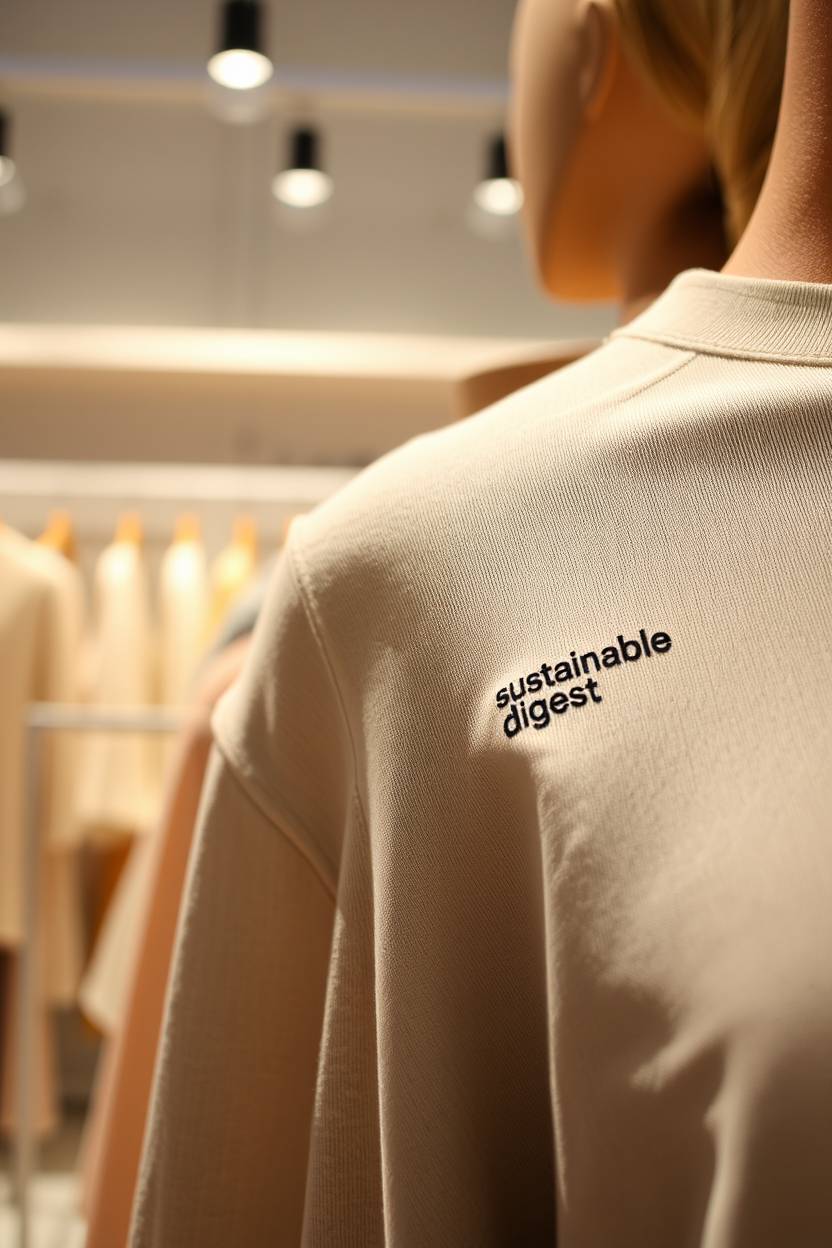
What is uniquely peculiar about society is, the more they express concerns, the more about the environment, eco-conscious consumers tend to trend in leading major changes. This change is not just a passing trend. It’s a lifestyle that’s becoming more popular all over the world.

The opportunities to make social impact are both abundant and very critical. By making smart choices every day, people can really help the planet.
Choosing to live sustainably is good for the Earth and brings people together. Just when eco-conscious consumer trends keep changing, the value of eco-friendly practices will keep growing.
The Awakening of Environmental Consciousness in America
General logic follows just when the world faces environmental challenges, both America and adjacent nations are seeing a big change. People are now more focused on eco-friendly practices. This change is not just a trend; it’s a movement that’s changing how Americans live and interact with the environment.
Current State of Eco-Awareness in the United States
The United States is seeing a big rise in environmental awareness. This is because of growing worries about climate change, pollution, and sustainability. Surveys show that most Americans now think about the environment when they buy things.
Statistical Trends in American Environmental Concern
Studies show that more Americans are worried about the environment. For example, a study found that over 75% of Americans think protecting the environment is very important. This change is seen in how people shop and what they prefer.
| Year | % of Americans Prioritizing Environment |
|---|---|
| 2018 | 60% |
| 2020 | 75% |
| 2022 | 80% |
Shifting Consumer Priorities Toward Sustainability
The greater a community cares about the environment, they want sustainable products. This is making businesses of all sizes change and come up with new ideas.
How Values Are Reshaping Purchasing Decisions
“The way we consume is changing. Consumers are no longer just looking for products; they’re looking for values.”
This change is clear in the growing need for sustainable and ethically made products.
The move towards sustainability is more than just a choice. It’s a cultural shift towards valuing the environment and living eco-friendly.
Understanding the Value of Eco-Friendly Practices with Eco-Conscious Consumer Trends
The public grows savvy across the world by noticing the value in eco-friendly practices. This change comes from a growing awareness of environmental issues. It also comes from a desire to live more sustainably.
Economic Benefits of Sustainable Choices
Choosing eco-friendly options is good for the planet and your wallet. One big advantage is the chance for long-term savings.
Long-term Savings from Eco-Friendly Investments
Investing in eco-friendly things like energy-efficient appliances and solar panels can save a lot of money. For example, using energy-efficient lights can cut energy bills by up to 30%.
- Reduced energy consumption
- Lower utility bills
- Potential tax incentives for eco-friendly investments
Environmental Impact Assessment of Consumer Choices
It’s important to know how our choices affect the environment. A good way to do this is by measuring your ecological footprint.
Measuring Your Ecological Footprint
An ecological footprint shows how much land and resources are needed to support our consumption. By looking at our ecological footprint, we can find ways to live more sustainably.

While the demand scales for eco-friendly products, businesses are stepping up. They’re coming up with new, sustainable options. This teamwork between consumers and businesses is key to moving forward with eco-friendly trends.
The Inspiring Evolution of Green Initiatives in Consumer Markets
Consumer markets are changing to include more sustainable practices. This change comes from an increasing awareness of environmental issues. People now want products that are good for the planet and healthier for them.
From Niche to Mainstream: The Growth of Eco-Friendly Products
Eco-friendly products are becoming more common, thanks to consumer demand. Now, you can find everything from biodegradable packaging to products made from sustainable materials.
This trend isn’t just about products. It’s also changing how companies work. Many are now using sustainable practices in their supply chains.
How Forward-Thinking Companies Are Responding to Consumer Demand
Companies are innovating to meet the demand for eco-friendly products. They’re working on new materials, production methods, and ways to distribute goods that are better for the environment.
Through engaging on sustainability, these companies help make the market greener. They also stay ahead in a fast-changing market.
The shift towards green initiatives in consumer markets is a good sign. It’s driven by consumer needs and the creativity of companies.
Transformative Sustainable Living: Practical Applications for Everyday Life
Our daily choices greatly affect the planet, making sustainable living key. As we learn about our environmental impact, we seek easy ways to live greener. This is why eco-friendly habits in our daily routines are becoming more popular.
Home and Energy Conservation Strategies
Making small changes at home can make a big difference. For example, using energy-saving appliances and turning off lights saves energy. Also, choosing green cleaning products and saving water are steps towards a greener life.
Small Changes with Big Environmental Impact
As Jane Goodall said, “Every day, we all affect the world around us. What we do matters, and we must choose how we want to make a difference.” Simple actions like using reusable bags and containers can have a big positive effect when we all do it.

Transportation and Food Choices for Reduced Carbon Footprint
Our choices in transportation and food are key to reducing our carbon footprint. Using public transport, carpooling, or driving electric cars cuts down emissions. Eating more plant-based foods and wasting less food also helps lower our carbon impact.
“The future depends on what we do today.”
By making smart choices every day, we help create a better future.
The Psychology Behind Climate-Friendly Consumer Behavior
Usually, as both consumers and producers become more aware of the environment, their choices change and their options expand. The decision to live eco-friendly is influenced by many things. These include personal values, what others think, and knowing about the environment.
Motivations for Adopting Eco-Friendly Lifestyles
People choose eco-friendly lifestyles for many reasons. They want to lessen their impact on the planet and support sustainable living. Eco-friendly choices come from a desire to protect the Earth and its future.
Overcoming Barriers to Sustainable Choices
Even though more people want to live eco-friendly, there are obstacles. These include the cost of green products and not knowing how our choices affect the environment.
From Awareness to Action: Breaking Through Resistance
Education and awareness help people overcome doubts about green choices. When we understand the benefits of eco-friendly products, we can make better choices. These choices align with our values and help create a greener future.
Becoming a Discerning Consumer: Navigating Greenwashing in the Marketplace
At the moment that people care more about the environment, it’s key to know the difference between real eco-friendly products and those that preforms greenwashing. Greenwashing is when companies make false claims about their products’ environmental benefits.
This can be very frustrating for those who want to help the planet. It’s important to spot greenwashing to make a real difference.
Identifying Authentic Eco-Friendly Products
To avoid greenwashing, being careful and informed is crucial. Look beyond what the company says. Check the product’s ingredients, packaging, and how it’s made.
Certifications and labels are a good place to start. For example, products with USDA Organic or Energy Star labels have met environmental standards.
Tools and Resources for Verifying Environmental Claims
There are many tools and resources to check if companies’ claims are true. These include:
- Apps that scan barcodes and give info on a product’s sustainability
- Websites that rate companies on their environmental actions
- Certifications that ensure products meet environmental standards
Apps and Certifications That Guide Conscious Shopping
Some great apps and certifications for shopping with a conscience include:
| App/Certification | Description | Benefits |
|---|---|---|
| Ecolibrium | An app that gives sustainability ratings for products | Helps consumers make smart choices |
| Fair Trade Certified | A certification for fair labor and sustainable sourcing | Supports fair labor and sustainable farming |
| GoodOnYou | An app that rates fashion brands on sustainability and ethics | Helps find more sustainable fashion |
Using these tools and resources helps consumers make better choices. They support companies that really care about the planet.

Revolutionary Sustainable Materials Changing Our World
Society is continuously moving towards sustainable materials. People are now more aware of the environment and want eco-friendly products. This demand is pushing for new, green materials that are tough and versatile.
Hemp and Bamboo: Versatile Eco-Heroes of the Material World
In the 21th century, hemp and bamboo are becoming popular eco-friendly choices. Hemp grows well with little water and no pesticides. It’s used in clothes and building materials.
Bamboo grows fast and is strong. It’s used in furniture, floors, and even as a plastic substitute.

Innovations in Plant-Based and Fruit-Based Leathers
The leather world is changing with plant and fruit-based leathers. These are made from fruit and plant waste, cutting down on waste and pollution. They’re good for animals and the planet, and great for fashion and cars.
How Alternative Materials Are Disrupting Traditional Industries
Materials like hemp, bamboo, and plant-based leathers are shaking up old industries. They’re not just better for the planet but also bring new ideas. The more tech gets better, we’ll see even more green materials, changing the world for the better.
Empowerment Through Cooperation: Consumer and Producer Cooperatives
The cooperative model is becoming a key player in eco-friendly efforts. It brings together consumers and producers to create positive change in the U.S.
How Cooperative Models Support Sustainable Practices
Cooperatives empower members to make decisions that help the community and the planet. This teamwork allows for sharing resources and knowledge. It leads to stronger, greener outcomes.
Key benefits of cooperative models include:
- Increased market access for sustainable products
- Improved resource efficiency through shared infrastructure
- Enhanced community engagement and education on sustainability issues
Success Stories of Thriving Eco-Friendly Cooperatives
Many cooperatives have adopted sustainable practices, helping both their members and the environment. For instance, some have switched to renewable energy. This move cuts down on carbon emissions and fossil fuel use.
| Cooperative Name | Sustainable Practice | Impact |
|---|---|---|
| Green Earth Cooperative | Renewable Energy Adoption | 50% reduction in carbon emissions |
| EcoCycle Cooperative | Composting and Recycling Programs | 75% reduction in waste sent to landfills |

These stories show how cooperatives can lead to real environmental change. They do this through teamwork and community involvement.
The Power of Transparency: Understanding Supply Chains
As influence dictates, people want products made in sustainable ways. This means we need to know how things are made. It’s key to making sure products don’t harm the environment and are made fairly.
The Critical Importance of Ethical Sourcing
Ethical sourcing is all about getting materials and products the right way. It means looking at how things are made and who makes them. Companies that do this well are seen as good by the public and attract customers who care about the planet.
Monitoring and Evaluation Methods for Sustainable Supply Chains
Companies need to check their supply chains to make sure they’re green. They do this by auditing suppliers and using data to see how they’re doing. This helps them find ways to be better for the planet.
Technology Solutions for Supply Chain Accountability
Technology is key to making supply chains clear and fair. Blockchain technology helps track products from start to finish. Data analytics tools help companies see how suppliers are doing and find ways to improve.

Using these tech tools and focusing on ethical sourcing helps businesses make better supply chains. This makes the world a greener and fairer place for everyone.
Consumer Advocacy: Becoming a Champion for Environmental Change
By becoming a champion for environmental change, consumers can make a big difference. We can all help by making better choices and taking action.
Effective Strategies for Advocating Better Business Practices
Supporting companies that care about the environment is a great start. We can also give feedback on products and services. This helps businesses know what we value.
Joining groups that push for sustainability is another way to help. These organizations work to make sure businesses are good for the planet.
Joining Forces: The Impact of Collective Consumer Action
When we all work together, we can achieve great things. Many campaigns have shown this. They’ve made businesses change their ways for the better.
Case Studies of Successful Consumer-Driven Campaigns
For example, fights against single-use plastics have worked. Now, many businesses use biodegradable or reusable items. This has also pushed companies to use materials better and cut down on carbon.

These stories illustrate how together we can make a big difference. We can help businesses be more green and sustainable.
Fair Trade vs. Free Trade: Making Informed Choices
More and more people are thinking about how their shopping choices affect the world. The debate between fair trade and free trade is getting louder. It’s important to know the difference because it impacts our economy, environment, and society.
Fair trade means producers get fair prices and follow certain rules about the environment and work. This is key for those who care about buying things that are good for the planet and people.
Understanding Fair Trade Certification and Its Benefits
The tariff friendly Fair Trade certification has many good points. It helps producers get better prices, work in safer places, and use practices that are good for the planet. When we buy fair trade products, we help improve the lives of those who make them.
Some main benefits of fair trade include:
- Fair prices for producers, so they can afford to grow their businesses
- Better working conditions, making sure everyone is safe and healthy
- Support for sustainable practices, which helps the environment
Balancing Economic and Environmental Considerations in Global Trade
The fair trade vs. free trade debate is about finding a balance. Free trade aims to lower trade barriers and tariffs. Fair trade focuses on fairness and protecting the planet.

To make smart choices, we need to think about how our shopping affects the economy and the environment. Knowing the differences between fair trade and free trade helps us support sustainable practices and fair producers.
In the end, whether to choose fair trade or free trade depends on what matters most to us. By making smart choices, we can help change global trade for the better.

Conclusion: Embracing an Eco-Friendly Future Together
The United States is waking up to the need for environmental care. This move towards a green future is clear. By choosing eco-friendly options and living sustainably, we can make a big difference.
Green choices in the market and new sustainable materials show our progress. Together, we can create a better world.
When we pick products that are good for the planet, we help change culture. More people want to help the environment, leading to new, green solutions. Working together, we can make our planet healthier.

Key Takeaways
- Adopting eco-friendly practices is crucial for reducing environmental impact.
- Eco-conscious consumer trends are driving the shift towards sustainable living.
- Sustainable living fosters a sense of community among individuals.
- Making conscious daily choices can significantly impact the environment.
- The value of eco-friendly practices will continue to grow as consumer trends evolve.
